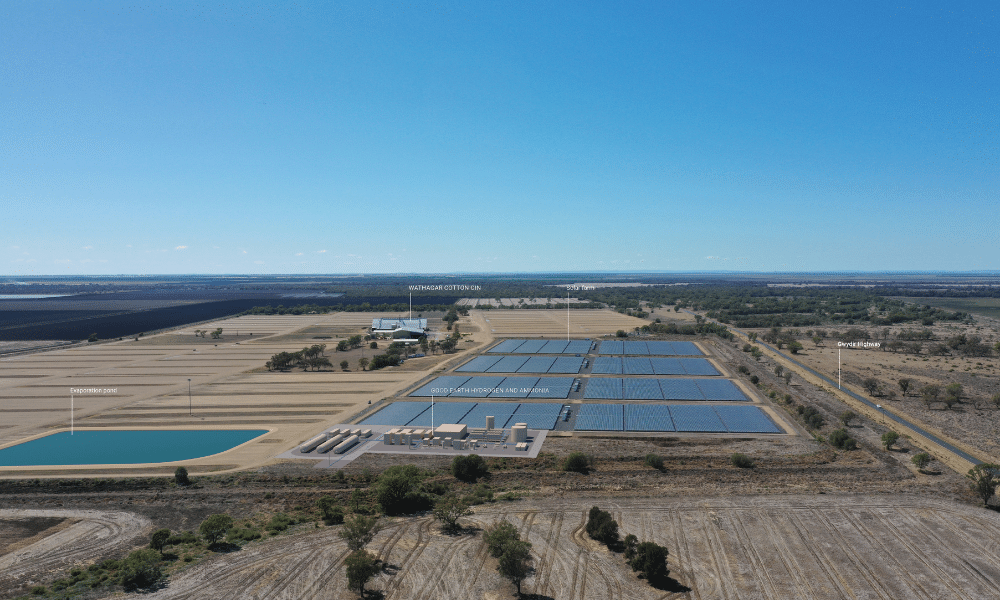Australia's GEGHA Project: Pioneering Green Hydrogen and Ammonia Success
Key Ideas
- The GEGHA project, a collaboration between Hiringa Energy, Sundown Pastoral Company, and the NSW Government, has successfully achieved Financial Close, marking a significant step towards green hydrogen and low-carbon ammonia production in Australia.
- GEGHA will produce 4,500 tonnes of low-carbon ammonia annually, displacing fossil fuel-based fertilizers and reducing up to 17,000 tonnes of CO₂-equivalent emissions per year, while also generating around 224 tonnes of green hydrogen to fuel heavy vehicles and replace diesel in irrigation pumps.
- The project will provide regional farmers with stable pricing, secure supply, and a local low-emissions alternative to imported fertilizers, promoting supply chain resilience and reducing reliance on natural gas or coal-based fertilizers.
- Backed by National Australia Bank (NAB) and supported by the NSW Government's Net Zero Plan, GEGHA is expected to be fully operational in early 2027, with plans for further expansion projects in the Riverina and Gwydir regions to enhance green fertiliser production and distribution across regional NSW and Queensland.
Australia's green hydrogen sector has achieved a significant milestone with the Financial Close of the Good Earth Green Hydrogen and Ammonia (GEGHA) project. A joint venture between Hiringa Energy, Sundown Pastoral Company, and the NSW Government, GEGHA aims to set a blueprint for regional hydrogen success. The project, located near Moree, NSW, will produce 4,500 tonnes of low-carbon ammonia annually, displacing fossil fuel-based fertilizers and reducing CO₂ emissions. Additionally, GEGHA will generate 224 tonnes of green hydrogen to fuel vehicles and replace diesel in irrigation pumps, promoting a cleaner agri-supply chain. By offering stable pricing and a low-emissions alternative to imported products, GEGHA enhances supply chain resilience and supports regional farmers. Backed by National Australia Bank and the NSW Government, the project is set to be operational by early 2027, with plans for further expansions to boost green fertiliser production in NSW and Queensland, benefiting farmers and promoting sustainability in agriculture.
Topics
Green Hydrogen
Renewable Energy
Sustainability
Carbon Emissions
Investment
Regional Development
Supply Chain
Banking
Agriculture
Latest News
